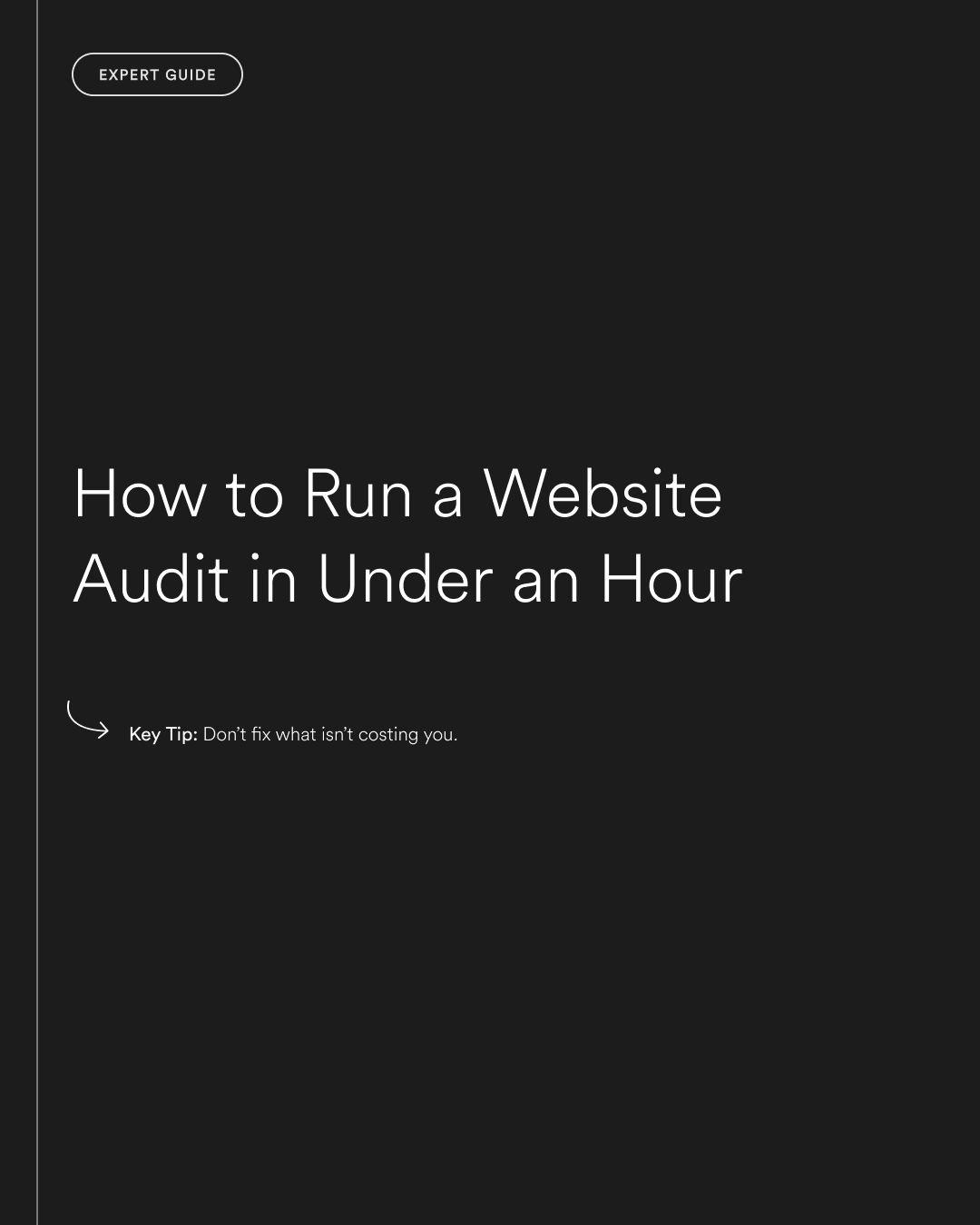If your website looks fine but isn't driving results, there's usually a reason and it's rarely just a design issue. Maybe traffic's steady but conversions are flat. Maybe customers complain it's slow or hard to use. Maybe you're pouring money into ads but people bounce the moment they land.
A full website redesign isn’t always the answer. Often, what you need first is clarity: a fast, focused way to spot what’s working, what’s broken, and what’s holding you back.
This guide walks you through a practical website audit you can run in under an hour. It’s not technical, it doesn’t require a developer, and it’ll help you make smarter decisions about what to fix, improve, or leave alone.
Key Tip: Don’t fix what isn’t costing you. Focus on the pages and actions tied to revenue, not just the stuff that feels messy. Many teams get stuck redesigning low-traffic or low-impact pages. An audit helps you focus where it matters.
Before you start: what you’ll need
- A recent Google Analytics or GA4 account (even basic setup is enough)
- Your website open in a browser (desktop and mobile)
- A second browser tab in Incognito mode
- A notepad or doc to record issues
- Optional: Hotjar or Microsoft Clarity for real user insights
Give yourself 45 to 60 minutes. Work fast, but stay sharp.
The Audit: 7 Steps That Actually Matter
1. Check your homepage above the fold
The first five seconds matter most. On both desktop and mobile, ask:
- Can a new visitor tell what you do?
- Is the headline clear, not clever?
- Is there a single, visible next step? (e.g. Contact, Book, Shop)
- Is anything moving, popping up, or distracting?
Common issue: A business coach had a homepage with a poetic headline and scenic background video. Beautiful, but bounce rates were sky high. Replacing the copy with a clear value prop halved the bounce rate in a week.
2. Check site speed and mobile performance
Run your site through PageSpeed Insights. Note both mobile and desktop scores. Pay special attention to:
- Time to interactive
- Cumulative layout shift (things jumping around)
- Speed index (how fast real content shows)
Anything under 50 on mobile needs urgent attention. Don’t obsess over hitting 100 — focus on usability.
Key question: Is it fast enough for your users to act without friction?
3. Review your top 5 pages by traffic
Open Google Analytics. Go to Reports > Engagement > Pages and Screens (GA4) or Behaviour > Site Content > All Pages (Universal Analytics).
Make a list of your top 5 pages. For each, ask:
- What’s the bounce rate or engagement time?
- Is there a clear next step or CTA?
- Are you matching intent? (e.g. blog vs product)
- Is the content current and accurate?
Example: One client discovered their “About” page was getting more traffic than their Contact page. But there was no CTA on it. Adding a button improved conversions by 12%.
4. Test your conversion path
Pick your main goal: contact form, booking, checkout, lead gen. Start from the homepage and go through it like a user.
- How many clicks does it take?
- Are there distractions or detours?
- Are any forms clunky, long, or broken?
- Do confirmation messages show?
Then test it on mobile.
Tip: Use an Incognito window so you see what a new user sees. Many conversion blockers are cookie-based or hidden from logged-in users.
5. Review content clarity and tone
This is qualitative, but powerful.
- Are headings helpful or vague?
- Do you speak in customer language or internal jargon?
- Is the tone consistent across pages?
- Are long blocks of text scaring people off?
Test: Read your key service or product page out loud. Does it sound like something you’d actually say to a customer?
6. Check your SEO basics
You don’t need an SEO tool to spot major gaps.
For 2-3 top pages, check:
- Page title (shows in browser tab)
- Meta description (right click > View Page Source or use a free tool)
- H1 heading (should be clear, only one per page)
- Alt text on key images (hover or inspect)
- URL structure (clean and readable)
Myth: SEO isn’t just about keywords. It’s about structure, clarity, and crawlability.
7. Look at real user behaviour (optional but valuable)
If you have Hotjar or Clarity installed, watch a few session recordings. Focus on:
- Where people stop or back out
- Rage clicks (clicking multiple times in frustration)
- Scroll depth (are they seeing your CTAs?)
These tools can highlight friction you’d never see otherwise, like a button that looks clickable but isn’t.
Common misconceptions
“We just need to update the design.”
Maybe. But check the numbers first. You might have a messaging or structure problem, not a visual one.
“We can tweak things slowly.”
That works for small fixes. But if your whole conversion path is clunky, you need a bigger shift.
“People don’t use our site much anyway.”
Why not? A good site should support sales, hiring, credibility, and customer trust. If it’s not doing that, something’s off.
“We already did an audit last year.”
Things move fast. Sites get messy. An audit is a snapshot, not a one-and-done task.
What to do now
You’ve run the audit. What next?
- List top issues by business impact (not aesthetics)
- Prioritise fixes that affect traffic or conversions
- Check if issues are structural, content-based, or visual
- Assign owners or schedule time to fix what matters
- Decide if you need expert help or can handle it in-house
Need a second set of eyes? Feel free to reach out. We’re happy to look over your audit notes or offer feedback on what to tackle first.



